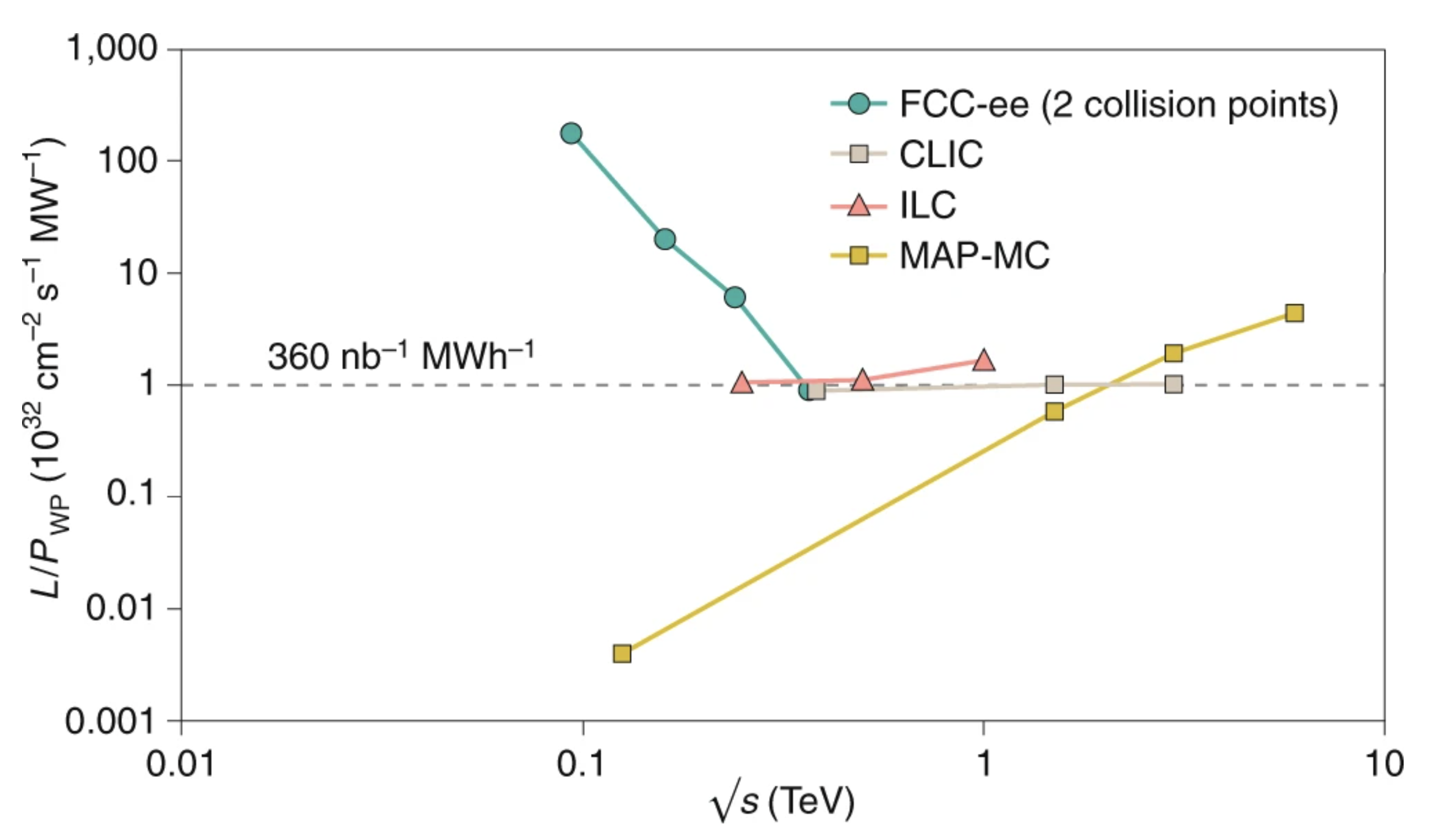
ENERGY EFFICIENCY
The FCC study has adopted an integrated approach to machine and infrastructure layout in order to host an intensity-frontier machine (FCC-ee) succeeded by an energy-frontier machine (FCC-hh) efficiently. This approach has been shown to be the most effective, as experience from the LEP/LHC scheme shows, since general infrastructures and accelerator systems contribute equally to the energy budget.
Circular colliders are intrinsically energy efficient because they collide the same particle bunches repeatedly over many turns. The beam energy lost by synchrotron radiation increases with the fourth power of the beam energy. Yet, in the energy range up to the top quark, the FCC-ee will operate efficiently in terms of total luminosity per electrical power, as illustrated in the figure below. Assuming an electricity price of €50 MWh–1, the FCC-ee electricity cost amounts to about €200 per Higgs boson!

The total luminosity L per supplied electrical wall-plug power PWP is shown as a function of centre-of-mass energy for several proposed future lepton colliders: the FCC-ee with experiments at two collision points, the International Linear Collider (ILC), the Compact Linear Collider (CLIC) and the Muon Collider designed by the US Muon Accelerator Program (MAP-MC). A value of 1 in the vertical units corresponds to 360 nb–1 MWh–1 as indicated by the dashed line. We caution that the design of the Muon Collider may be less mature than the other three colliders presented.
For the first phase of a lepton collider (FCC-ee), operating up to the 2060s, the average energy consumption for operation is estimated at 1.4 TWh per year (based on the current state of the design), and is of the same order of magnitude as the total consumption of the current laboratory. The enormous technical progress made in the design of accelerators in recent decades, especially in terms of overall efficiency of operation, is particularly visible when comparing the performance of the first phase of the FCC to that of the Large Electron-Positron Collider (LEP) operated at CERN between 1989 and 2000. Phase 1 of the FCC will replicate the entire LEP programme and physics data in less than a day of operation!
Key Challenges:
Push klystron efficiency far beyond 65%
Increase the power range of solid-state amplifiers
Achieve high reliability of a large number of concurrently operating systems
Develop low-energy consumption magnets
Optimise the electrical load management of accelerators
Assess the potentials for waste heat recovery and re-use